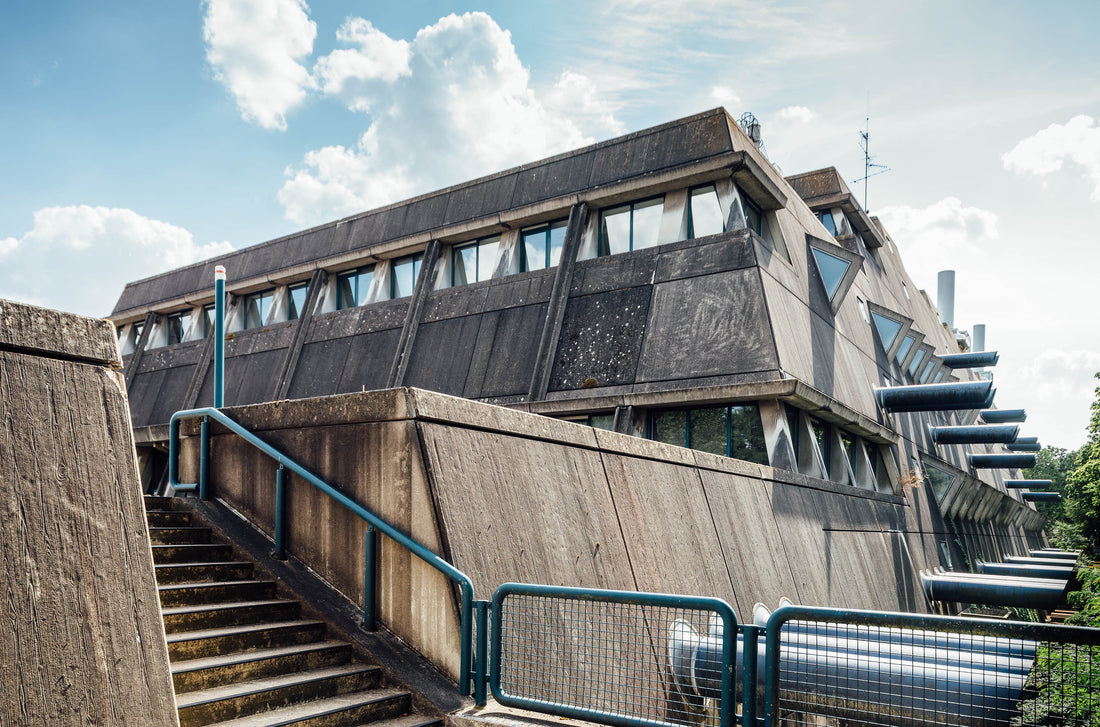
Berlin’s Brutalist Mäusebunker saved from demolition
Share
A hulking highlight of our Brutalist Berlin Map, the concrete Mäusebunker has been listed as a historical monument in Germany following a campaign against its demolition. Richard Enright speaks to one of the campaign leaders Felix Torkar, architectural historian and author of our Brutalist Berlin Map.

Photography by Felix Torkar
Berlin’s iconic Brutalist Mäusebunker has been saved from demolition and listed as a historical monument. The building was earmarked to be torn down in 2020 having laid vacant for a decade. That same year a campaign to protect the ‘mouse bunker’ was launched. In May, the campaign was successful and the building was preserved by the German Department of Heritage Protection.
The laboratory complex was designed by Gerd and Magdalena Hänska and inaugurated in 1981 as the animal laboratories centre of the Freie Universität Berlin. In more recent years it has been used as a research institute for experimental medicine.
Since its beginning the building has caused controversy. The doomy design combined with its use as an animal testing facility was not always loved by locals. Debate was rekindled when it was announced that the building was to be demolished with campaigns to save it running up against opposition. Nathan Eddy documented these disagreements in his film Battleship Berlin (2021).

Despite controversy the building is perhaps Berlin’s most famous Brutalist structure. Felix Torkar, the historian who started the rescue campaign along with Gunner Klack, says the Mäusebunker is distinctive in overcoming the highly technological challenges that building a laboratory poses while maintaining a unique sculptural form.
News of the listing has come as a relief for the architecture community. It is the culmination of successful collaboration between heritage authorities, the building’s custodians and the community at large.

Will the Mäusebunker be repurposed and opened to the public?
Discussions on the building’s future have begun and the heritage authorities have established a collaborative working group to consider possibilities. Many believe it should be repurposed into a communal space. “My personal hope is that the building will become accessible to the public,” says Torkar, “I am even open to more invasive options like incising courtyards. The Mäusebunker’s design language is powerful enough to handle it.”
The authorities’ recognition that a once condemned monument has an economically viable future brings hope to those campaigning under similar circumstances elsewhere. Brutalist buildings around the world are under threat, but many are being saved and repurposed. Mäusebunker’s story is one that many will be happy to hear and hopefully recreate.


Useful information
Address: Krahmerstraße 6, 12207 Berlin, Germany
Location on Google Maps
Find the Mäusebunker on our Brutalist Berlin Map
This map is your guide for exploring Brutalist architecture in Berlin. The map features 50 remarkable buildings with an information, details and original photography by Felix Torkar, an architectural historian currently writing his PhD on Neobrutalism at FU Berlin. He is a member of the SOS Brutalism team and a former curatorial assistant at the Deutsches Architekturmuseum.

